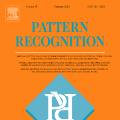Detecting damage in important structures using monitored data is a fundamental task of structural health monitoring, which is very important for the structures' safety and life-cycle management. Based on the statistical pattern recognition paradigm, damage detection can be achieved by detecting changes in distribution of properly extracted damage-sensitive features (DSFs). This can be naturally formulated as a distributional change-point detection problem. A good change-point detector for damage detection should be scalable to large DSF datasets, applicable to different types of changes and able to control the false-positive indication rate. To address these challenges, we propose a new distributional change-point detection method for damage detection. We embed the elements of a DSF distributional sequence into the Wasserstein space and develop a MOSUM-type multiple change-point detector based on Fr\'echet statistics. Theoretical properties are also established. Extensive simulation studies demonstrate the superiority of our proposal against other competitors in addressing the aforementioned practical requirements. We apply our method to the cable-tension measurements monitored from a long-span cable-stayed bridge for cable damage detection. We conduct a comprehensive change-point analysis for the extracted DSF data, and find some interesting patterns from the detected changes, which provides important insights into the damage of the cable system.
翻译:暂无翻译




